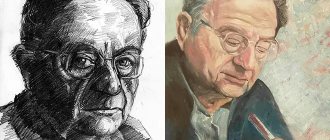Milton Erickson: biography
At the end of the nineteenth century, the parents of a famous psychotherapist moved to Nevada with the aim of mining silver and gold.
The famous psychotherapist Milton Erickson was born there on December 5, 1901. He went to school in Wisconsin. Studying was not easy for him due to dyslexia. In 1919, after graduating from high school, Milton contracted polio. This infection affected all the systems of his body, and doctors predicted that he would have a short life, spent only in a supine position. Having a large supply of time, the future famous scientist spent it on memories and training the senses that are responsible for perception. He spent months mentally developing the movements he needed to look out the window, pick up a spoon, and so on. Less than a year after his entire body was paralyzed, Milton Erickson could already come to the University of Wisconsin on crutches. Hard physical work led to the fact that after two years the young student could already walk without crutches, limping slightly, his body weight also increased, and all problems with the spine were resolved. Carefully studying the works of Luria and other psychotherapists, Erickson, based on his feelings, derived many principles in working with people using hypnosis and simply counseling.
At the age of 50, Milton Erickson was overtaken by post-polio syndrome, after which he was able to regain only partial strength. He spent his remaining years in a wheelchair and died at 78.
Milton Erickson's principles are still actively used in medicine and psychology, helping people find peace of mind. He was not only fond of hypnosis, but also believed in the power of the subconscious, to which he gave the lion's share of recovery and change in a person's personality.
Milton Erickson personality
The biography of this scientist only confirms the strength of his spirit. Not everyone can achieve results with just thinking and a lot of desire. Erickson is an example of a strong person who boldly pursues his goal. He had a goal - to start walking, and he started. He wanted to restore all motor functions of the body - he succeeded at a young age.
Many also spoke of him as an optimistic person with an excellent sense of humor. He never allowed himself to lose heart, he believed in the power of the subconscious and the driving forces of a person, which can do the almost impossible. Erickson's quotes testify to the strength of his spirit. Here are some of them:
- “Nothing truly ends while we are alive.”
- “We learn very quickly in situations we don’t like.”
- “And in every life there must be rain. And there will be days that are dark and sad.”
- “Always set yourself a realistic goal in the near future” and so on.
Milton Erickson's stories and interactions with his patients reveal his profound influence on them. He liked the indirect influence on people - during the conversation, without directly pointing out problems, Milton changed a person’s thinking and behavior.
Help with advice
But Erickson's interests were not limited to the possibilities of hypnosis. He was interested in pedagogy, communications, and psychology. The famous English anthropologist Gregory Bateson invited him to be a consultant. He had made the film Trance and Dance in Bali and wanted Erickson to evaluate his work. Bateson introduced Erickson to other famous psychiatrists. A book, Unusual Therapy, was written about Milton's work. Its author was Jay Haley, who was a student of Erickson and later founded the Institute of Family Therapy in Washington. This book brought Milton popularity. He gained followers and students. He began conducting educational seminars and trainings and did this all his life.
Erickson's attitude towards payment for his work
Milton Erickson was never greedy or covetous. He charged for his psychotherapy or hypnosis services, but he did not have a specific amount for everyone. The scientist was sure that to work on himself a person must sacrifice something material, but he entered into the position of each client. He took practically nothing from poor people and students. The psychotherapist was one of the few people who worked for the idea. He never prioritized his enrichment, but devoted himself entirely to science. Milton wanted to develop it as much as possible and study the forms of behavior of different people.
There are 5 principles of Milton Erickson in working with clients that helped him and his followers change a person's thinking.
You can read
But his activities are so interesting that several literary works have been created about him and his work. Among them are “The Wisdom of Milton Erickson” by R. Havens, “Classical and Ericksonian Hypnosis” by M. N. Gordeev, “New Hypnosis” by J. Gaudin and others. Of course, it is more informative to read the works of a scientist named Milton Erickson. The books he wrote still help psychotherapists and are training aids on hypnosis. Among them are “Hypnotherapy and the development of personal self-awareness”, “Psychotherapy strategy”, “Seminar with Dr. Milton G. Erickson, MD”, “My voice will remain with you”. The latest work is a collection of stories on psychotherapy, which may be of interest to a wide range of readers.
The first principle of working with people according to Erickson
Everything is ok with people. It says that every person can develop and change throughout his life. Each level of development achieved is a support for further personal growth. With the process of personal growth, different points of view and visions of the situation arise, with the help of which we can analyze everything that happens and learn lessons. Knowing that at every moment of life everything is OK with us, we see a little more than we saw before, that is, we go beyond the usual, the former. Based on this, we have options to choose from.
The second principle of the psychotherapist
Focusing on... Consciousness limits our ability to analyze information. We perceive much more with our subconscious. Using certain techniques, Milton turned the conversation so that a person could better recognize and understand his feelings, and make the right choice for him in this situation. After this, the client gains inner strength, self-confidence, and ceases to need the advice of outsiders.
Erikson's Fourth Principle
Positive intention in behavior. This principle states that every human action is based on good intentions. At a certain moment, we have specific needs that we satisfy with the help of certain forms of behavior. After a while, we may no longer understand why we made a particular decision or acted in one way or another. But if we believe that every action has a positive intention, Milton Erickson argued that we will reach a new level of understanding, entailing a change in personality.
How is it different from classical hypnosis?
Erickson's position differs from conventional hypnosis in several different ways .
While the process of hypnosis is usually conceptualized in terms of questions from the therapist issuing standardized instructions to a passive patient, Ericksonian hypnosis emphasizes the importance of an interactive therapeutic relationship and the purposeful engagement of the subject's internal resources and experiential life.
Dr. Erickson revolutionized the practice of hypnotherapy .
His psychotherapy is about providing access to a person’s internal resources in order to eliminate both psychological problems and pain problems.
This scheme is based on contact and joint work between the psychotherapist and the client .
The new psychotherapeutic strategies that Dr. Erickson used in his treatment of individuals, couples, and families stemmed from his hypnotic orientation.
Although he was known as the world's leading hypnotherapist, Dr. Erickson used formal hypnosis in only one-fifth of cases in clinical practice .
Dr. Erickson brought about a fundamental shift in modern psychotherapy. Many elements of Erickson's perspective that were once considered extreme have now been incorporated into modern practice.
Psychotherapist techniques
Milton Erickson's techniques in the practice of hypnosis are widely used in many countries around the world. By developing in others a positive attitude towards themselves and the whole world, he improved his therapeutic techniques in working with clients. There are several well-known Ericksonian trance induction techniques.
- Say “Yes” - during the conversation, the psychotherapist uses statements with which the client constantly agrees, lulls his vigilance, and he also answers “yes” to a statement with which he may not agree.
- Breaking a pattern is behavior that is unusual in a particular situation. The interlocutor is confused, and the psychotherapist gives instructions that the client accurately follows.
- Chatting. This technique is used by gypsies. The psychotherapist pronounces a set of words, jumping from one topic to another. A person, trying to understand the meaning, gets lost, his consciousness cannot cope with the flow of information, at this time instructions for action go directly to the subconscious.
- Overload - double guidance. Two people stand on different sides in relation to the client, gesture, touch and chatter him. All modalities become overloaded (auditory, kinesthetic and visual), consciousness turns off.
- Triple helix. This technique was actively used by its author, Milton Erickson. Quotes, stories, and messages are used in it, but the first two are not told to the end, interrupting in the most interesting place. The third story with instructions for behavior is told to the end, then the second and first ends. The person enters a light trance.
“EXTRAORDINARY PSYCHOTHERAPY” AND ITS CREATORS
Jay Haley is in many ways the creator of the legendary figure Milton Erickson. His book “Extraordinary Psychotherapy” was a rare success and not only introduced Ericksonian practice, but brought many people into psychotherapy. Unencumbered by respectable psychotherapy degrees, he graduated from college as a librarian and became involved in the famous project in Palo Alto, where he studied communication in normal and pathological conditions under the direction of Gregory Bateson in the postwar years.
From there it was not far to the then little-known Milton Erickson, with whom Haley spent many years, working and communicating very closely. Hours of conversations, transcripts of tape recordings, observations, reflections... Jay Haley was first and foremost a researcher who was trying to practice.
The independence of his professional views and the brightness of his position made him a hooligan in the eyes of many. His ex-wife, Clu Madanes, one of America's leading family therapists, raised in the psychoanalytic tradition, recalled that she had long refused to meet her future husband, outraged by his Don Quixotic battles (not yet fashionable) with the “mills” of psychoanalysis. Therapy was “long” at the time, and “short” came after a long history, part of which was due to Hayley’s efforts. In Russia, we often forget about this, having immediately received the first and last pages of this difficult chronicle.
Jay Haley came to psychotherapy, which seemed boring and ineffective to him, and became a “knight of the exception to the rule” - a knight of the order, where Erikson was the Grand Master - the Master whom he himself recognized and whom he forced others to serve.
Erickson was an experienced psychiatrist and knew well how a clinical case should “proceed” according to the “rules of good manners” adopted in psychiatry, and just as calmly ignored this knowledge, allowing changes in the patient’s life and his fate - exceptions to the rules. The number of exceptions multiplied throughout his long life, but the rules remained.
Jay Haley, apparently, was not bored with Milton Erickson. One of the confirmations is this book - in some way a wall newspaper, where Haley wrote down his notes and thoughts about his teacher and colleague over the years.
Jay Haley has devoted many years to researching family therapy. He published the magazine “Family Process” and actually contributed to the “family process” of an entire professional field. He worked with Salvador Minuchin in Philadelphia, ran his own institute together with Clue Madanes, and trained more than one generation of psychotherapists. A former librarian, he became an encyclopedist and the author of many books.
Its genre is truly short, unexpected, solution-oriented psychotherapy. And there is something about him from a magician who is about to pull a “rabbit” out of his hat - a serious client complaining about real problems.
In person, Haley seems graceful, a little timid, a little distant—as if she were behind a transparent glass wall. The impression is all the more surprising because it is produced by a man who made so many walls permeable and “passed” through them.
With his life and career, he proved that exceptions can be made the rule, and deservedly takes his place on the professional Olympus.
Leonid Krol










